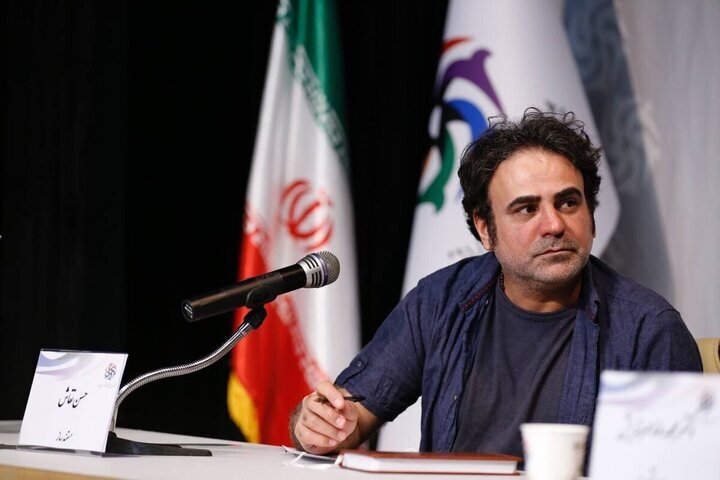
According to Khabar Online news agency, Hassan Nachih, director of the documentary cinema, said about the sports film festival and the beginning of its 14th round: I am somewhat familiar with the sports film festival and my friends and colleagues have explained its strengths and weaknesses. Unfortunately, I have not yet made a film that is specific to sports, but in my latest work, the documentary “Yazd to Yazd”, which I am currently working on, I have historical and documented references to the boom in football and the official competition between Europeans living in Yazd during the early reign of Ahmad Shah Qajar.
According to Mehr News Agency, the director of the documentary “From Paris to Paris” said: Perhaps the most important reason why I have not made a sports film so far is the lack of desire of the clients to make films that express the history of ancient or contemporary sports. Sometimes, there are works with color and gloss of slogans, in which the aspects of video and video art are seen more than the presentation of documentation based on research.
This documentary maker added: To better understand the word, I refer to Zorkhane movies; A lot of works that, with media coverage, instead of relying on ancient and national concepts, have been focused on relying on a musical structure for the background of this authentic Iranian sport.
In response to the question of which sports documentaries he likes, Nachih said: I remember Hejir Dariush’s excellent and pure work called “Holy Pit”, which deals with the establishment of the Zorkhaneh of Melli Bank in Tehran based on proper research. I find this production more effective than those promotional products. Or a film like “Be Sardi Ahan” made by Khosrow Sinai in 1349, which deals with the life of Mohammad Nasiri, the world weightlifting champion. The characteristic of this work is its experimental and creative structure. Sinaii knows very well that the media of that time, from radio and television to sports magazines, praised Nasiri as it should be. For that occasion, it can always be mentioned as a special movie of weightlifting.
He added: Khosrow Sinaii told me a memory about this film; When the work was made, Nasiri was supposed to come to the theater and see the result of his efforts in front of the camera. I was at the end of the theater and when the movie started, I opened the door and left because the prevailing thought was that I had made a work in praise of the Olympic hero. Some time later, Nasiri called me and thanked me that the film was not glorifying him and at the same time glorifying weightlifting.
This director stated: We must look at realistic sports movies because simply by recording sports events or showing a series of cultural movements, we cannot claim that we have honored sports in the cinema. We need to create culture, we need to encourage artists to record works that we have neglected in recent and distant times. Also, let’s depict the roots of the sports transformation in these films and remind the cultural and social background of the heroes, regardless of the common advertisements that have plagued our cinema.
Saying that not much work has been done except for making films about heroes like Takhti and Dehdari, Nachichi said: This issue is perhaps the main reason why I have not yet been able to make a documentary in this field. The first goal of the documentary film is to raise awareness and improve the chaotic situation. The film that is produced must be an expressive language for the audience. These days, I am giving advice on some historical works that deal with the roots of the boom of a certain sport in some cities of Iran. If these films get proper financial support, we will see new readings.
Nechis stated: Sufficient and proper research along with a coherent technical structure, avoiding reporting or making news of the documentary work, creates a cultural transformation. Recently, I re-read “Letters from Yazd to India and vice versa”, in one of the letters to India in 1290, it is reported that Yazdi women have learned games and group sports from the Ferangi living in the city, and we are witnessing the prosperity of sports fields in the city. Among these sports are volleyball and cricket.
This filmmaker emphasized about the sports movies that influenced him: There were many sports movies that influenced me; The most important of them is “Chariots of Fire” by Hugh Hudson, which deals with the 1924 Olympics, and its music is composed by Vangelis, who was the music of our country’s sports programs for many years. I also like the movie “Thief” from 2010 and the movie “Air” from 2023, which deals with Nike and Michael Jordan shoes.
In the end, the director of the documentary “Persian Primary School” said: As I said before, I am interested in discussing some sports history of my country, for example, wrestling in the ancient era of Iran, or polo in the Safavid era, which still has traces of it. Also, I would like to see the prosperity of some popular international games in contemporary Iran, but this will be possible when investors in the documentary field realize its necessity, and I hope it will happen.
The 14th International Sports Film Festival of Iran as the exclusive representative of the International Federation of Sports Films (FICTS) with the support of the National Olympic Committee and the support of the Ministry of Sports and Youth, the National Paralympic Committee, the Tehran Municipality, the Broadcasting Organization and the Cinema Organization from December 6 to 9 this year in Palestinian cinema will be held.
24457
